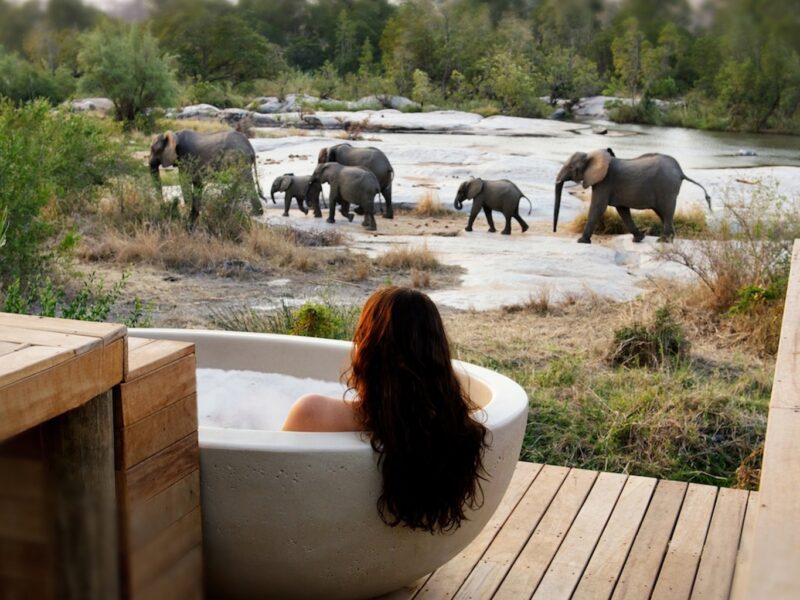Top 10 Safari Tips
Planning a safari? Make the most of your adventure with these essential tips! From choosing the right destination to packing smart and respecting wildlife, these safari tips will help you enjoy the best game viewing, stay safe, and make unforgettable memories. Whether it’s your first time or you’re a seasoned traveler, these practical suggestions ensure a smooth and rewarding safari experience.
1. Choose the Right Destination for Your Interests
Africa offers a broad spectrum of safari experiences, each offering something unique. For those interested in the Big Five—lion, leopard, elephant, buffalo, and rhino—destinations like Kruger National Park in South Africa and the Maasai Mara in Kenya are ideal. If you’re drawn to primates, gorilla trekking in Uganda or Rwanda provides an intimate, unforgettable encounter with these majestic creatures. For an exceptional water-based safari, explore Botswana’s Okavango Delta or Zambia’s Lower Zambezi, where you can experience wildlife from a canoe or boat. The key is to understand your interests—whether it’s predators, birdlife, cultural experiences, or landscapes—and choose a location that aligns with them.
2. Travel in the Right Season
The timing of your safari impacts what you’ll experience. The dry season (June to October) is when the bush is thinned out, making it easier to spot wildlife as they gather around the remaining water sources. This is the best time for classic game viewing. However, the green season (November to March) is more affordable and quieter, offering fewer crowds and the chance to see baby animals and vibrant landscapes. The green season is also ideal for birdwatching, with migratory birds flocking to Africa’s parks. Decide whether you’re willing to trade fewer crowds for slightly more challenging wildlife viewing or stick to the peak months for abundant sightings.
3. Pack Light, but Smart
Although safari lodges typically provide laundry services, it’s still important to pack smart. Choose lightweight, moisture-wicking fabrics that keep you cool during the heat of the day but can also provide warmth in the cool early mornings and evenings. Neutral colors (khaki, beige, olive) are best, as they blend with the landscape and reduce your visibility to animals. Steer clear of bright hues, as they can attract insects and startle wildlife. Essential items include a wide-brimmed hat to protect from the sun, sunscreen (high SPF), insect repellent (for malaria zones), and comfortable, durable shoes for walking safaris. A pair of binoculars and a camera with a zoom lens are a must for capturing moments that happen at a distance.
4. Invest in a Good Camera or Binoculars
While you don’t need to bring professional equipment, a quality camera with a zoom lens (ideally 200mm or more) will make a significant difference in your safari experience. Wildlife can often be at a distance, so a pair of binoculars is crucial for getting a closer look, particularly for birdwatching. Consider binoculars with a magnification of 8×42 for general safari use—they’re lightweight, versatile, and great for spotting both large and small animals. A waterproof camera or phone with a good zoom is also useful in case the weather turns.
5. Listen to Your Guide
The guide is your key to an immersive safari experience. Their expertise in tracking, interpreting animal behavior, and ensuring safety is invaluable. In addition to providing insight into the wildlife, they can help you spot things that would otherwise be easily missed. For example, a good guide can hear the subtle differences in animal calls and identify animal tracks to locate game. During walking safaris, especially, following the guide’s advice about movement and safety is critical. Don’t hesitate to ask questions—they’re often very knowledgeable about the ecosystem, local culture, and the history of the area you’re visiting.
6. Be Patient—and Present
Safari is a slow game that requires patience. Don’t rush from one animal sighting to the next; sometimes the most fascinating moments happen when you remain still and simply observe. Watching a lion rest in the shade or a giraffe gracefully walking through the plains is worth more than ticking off the next animal on your list. While it’s tempting to focus on capturing photos, remember to look up from your camera occasionally and take in the surroundings—the smells of the bush, the sounds of distant birds, and the vast, open skies.
7. Respect the Animals and Their Space
Always remember, you’re a visitor in the animals’ territory, and it’s essential to follow all safety guidelines to avoid disturbing their natural behavior. Minimize noise in the vehicle and avoid sudden movements that might startle the animals. Never stand up or lean out of the vehicle when wildlife is near. Respect your guide’s instructions—such as keeping a safe distance from potentially dangerous animals like elephants or lions. Avoid the temptation to rush for a closer shot or disrupt an animal’s natural behavior for the sake of a photo. The goal is to appreciate and respect wildlife without interrupting their lives.
8. Bring a Sense of Adventure (and Humor!)
A safari is full of surprises—sometimes it rains when you least expect it, or animals decide to hide. Vehicles can break down, or roads can become impassable due to weather. Embrace the unpredictability of it all—it’s part of the adventure. Laugh about the challenges and see them as part of the journey. Flexibility is key, as plans can change quickly. Safari isn’t about rigid schedules, but the joy of spontaneous discoveries. You might just stumble upon a hidden watering hole full of animals or get stuck waiting for a family of elephants to cross the road, which can be a memorable experience in itself.
9. Stay Hydrated and Protect Yourself from the Sun
Long hours in the African sun can take a toll on your body. To avoid dehydration, make sure to drink plenty of water throughout the day, especially if you’re doing physical activities like walking safaris. It’s easy to forget in the excitement of spotting animals, but staying hydrated is essential. Sunscreen (SPF 30 or higher) is a must to protect your skin, and wearing a hat will provide shade and prevent sunburn. If you’re doing a walking safari or spending a lot of time in the bush, wear long sleeves and pants to reduce sun exposure, and opt for lightweight fabrics to keep cool.
10. Don’t Over-Schedule Your Days
While it’s tempting to pack your itinerary with every possible activity, don’t forget to schedule down time. Safari is not just about game drives; it’s about immersing yourself in the natural beauty around you. Whether it’s relaxing by the lodge pool, enjoying a sundowner as you watch the sunset, or sitting quietly on your porch listening to the sounds of the wild, these moments of stillness are often just as rewarding as spotting a lion. This is especially important if you’re traveling with family—children may need a rest from the excitement, and adults will appreciate a break to soak in the serenity.




